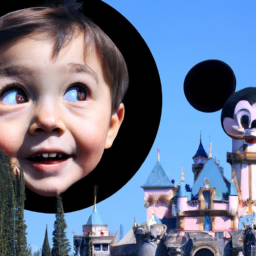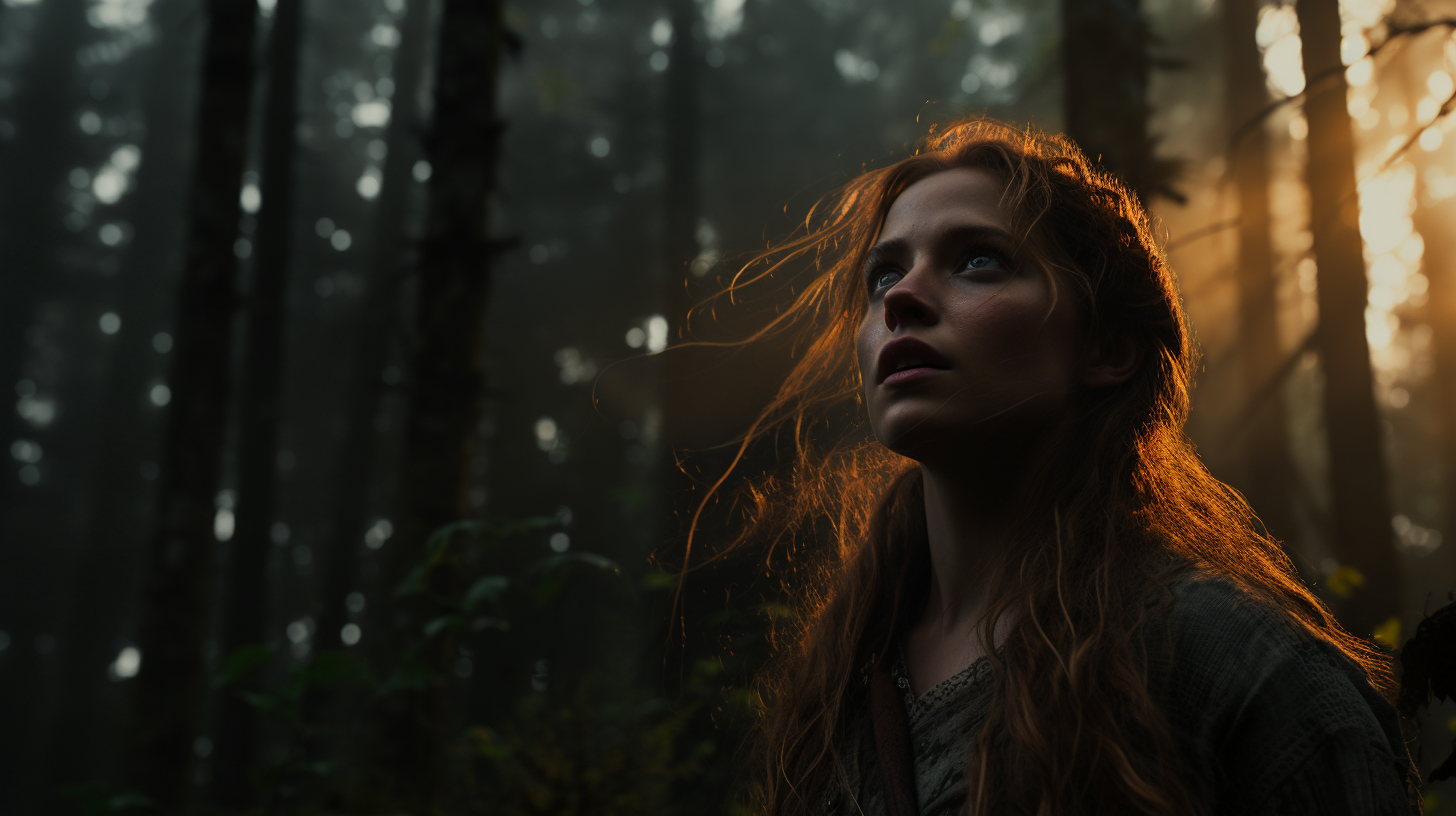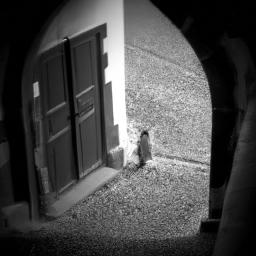After visiting Disneyland multiple times, I can attest that it truly is a place where dreams come true.
The moment you step through those gates, you’re transported to another world filled with magic, wonder, and endless possibilities.
It’s hard not to get caught up in the excitement and joy that permeates every inch of this beloved theme park.
One of the things I love most about Disneyland is its rich history.
From its humble beginnings in 1955 to its present-day status as one of the most popular tourist destinations in the world, there’s something truly special about walking in the footsteps of Walt Disney himself.
But beyond its historical significance, Disneyland is also home to some of the most iconic attractions and entertainment options on the planet.
Whether you’re looking to ride Space Mountain or watch a live performance of ‘Fantasmic!’, there’s something for everyone at this magical kingdom.
So if you’re ready for an unforgettable adventure full of fun and fantasy, then join me as we explore all that Disneyland has to offer!
Key Takeaways
- Disneyland is a magical theme park with a rich history and over 55 attractions, including iconic rides and charming shows.
- Planning a visit is crucial, with tips and tricks such as visiting during off-season months and utilizing FastPasses to prioritize must-see experiences.
- Disneyland parks around the world, including Tokyo, Paris, Hong Kong, and Shanghai, each have their own unique flair and attractions.
- Fun facts about Disneyland include that over 650 million people have visited since its opening, visitors walk an average of eight miles during a day at the park, and there are different lands to explore and iconic treats available throughout.
History of Disneyland
You’re gonna love learning about the fascinating history of Disneyland! It all began with Walt Disney’s vision to create a place where families could come together and experience magic.
The idea was born out of his frustration with traditional amusement parks that were often dirty, unsafe, and lacked imagination. In 1955, after years of planning and construction, Disneyland opened its gates to the public for the first time.
From its humble beginnings, Disneyland has undergone significant expansion over the years. The park started off with just 18 attractions in one land, but it has since grown into multiple lands with over 55 attractions.
This growth includes iconic attractions like Space Mountain and Pirates of the Caribbean that have become synonymous with Disneyland. As you’ll soon see when we explore these iconic attractions next, Disneyland continues to captivate visitors from all around the world with its unique blend of entertainment and wonder.
Iconic Attractions
The Space Mountain ride is totally gnarly and a classic favorite among park-goers, but it’s not the only iconic attraction at Disneyland. From thrilling rides to charming shows, there’s something for everyone to enjoy.
Here are just a few famous rides and hidden gems worth exploring:
-
Pirates of the Caribbean: This classic ride takes you on a journey through the high seas, complete with animatronic pirates, treasure chests, and even a pirate battle.
-
Haunted Mansion: Enter this spooky mansion if you dare! Filled with ghostly apparitions and creepy decor, this ride is sure to give you chills.
-
It’s a Small World: This charming boat ride takes you through different countries around the world, with cheerful dolls singing "it’s a small world after all."
Behind the scenes, there’s an incredible amount of work that goes into designing and maintaining these attractions. Imagine creating entire worlds within each ride or ensuring every detail is perfect so guests can have an unforgettable experience. I’m amazed by the dedication of the Disneyland team in making it all happen.
As much as I love exploring Disneyland’s iconic attractions, there are also plenty of entertainment options beyond just rides. Let me tell you about some of my favorites…
Entertainment Options
Get ready to be dazzled by the variety of entertainment options available at Disneyland where dreams come true! From the lively parades that feature your favorite Disney characters and musical performances that showcase talented singers and dancers, to interactive experiences that bring your beloved Disney stories to life, there’s something for everyone.
The live shows are a must-see, with stunning visuals, impressive choreography, and catchy tunes that will have you singing along in no time. And don’t forget about character meet and greets! Meeting Mickey Mouse or getting a hug from Princess Elsa is an unforgettable experience that you’ll cherish forever.
At Disneyland, the entertainment options go beyond just watching shows or meeting characters. You can become part of the action with immersive experiences like Jedi Training: Trials of the Temple or Guardians of the Galaxy – Mission: BREAKOUT!. These attractions allow guests to step into their favorite movies and TV shows and interact with them in real-time. Whether you’re young or old, these experiences will leave you feeling like a kid again.
But after all this excitement, it’s time to refuel! Let’s talk about dining options next…
Dining Options
Delight your taste buds with the diverse and delectable dining options available at Disneyland, where you can indulge in everything from savory snacks to scrumptious sweets.
Character dining is a unique experience where guests can dine with their favorite Disney characters. From Mickey Mouse-shaped waffles for breakfast to Princess-themed dinners, character dining offers an unforgettable meal experience. The restaurants are decorated with Disney-themed interiors that bring the magic of the park into every bite.
But it’s not just about character dining – there are also plenty of other unique cuisine options available throughout Disneyland. Try the famous Dole Whip dessert or churros from one of the many snack vendors located around the park. For those looking for something more substantial, there are sit-down restaurants that offer a range of international cuisines, such as French-inspired dishes at Cafe Orleans or Mexican food at Rancho del Zocalo.
With so many choices available, you’ll never go hungry while exploring all that Disneyland has to offer.
As much as I enjoyed the delicious dining options at Disneyland, I was equally impressed by their accommodation options.
Accommodation Options
Experience the magic of staying at one of Disneyland’s themed hotels, where every detail is designed to transport you into a different world. From the rustic charm of Disney’s Wilderness Lodge to the futuristic vibe of Disney’s Contemporary Resort, there is an accommodation option for every taste and budget.
While some may opt for the convenience and immersive experience offered by a Disney hotel, others may prefer more budget-friendly options like Airbnb rentals or nearby off-site hotels. However, it’s important to consider factors such as transportation costs and distance from the parks when weighing these options.
Regardless of which route you choose, a stay at Disneyland promises to be an unforgettable experience filled with excitement and wonder.
Planning your visit can seem overwhelming with so many options available. But don’t worry – with a little research and preparation, your trip can be smooth sailing from start to finish.
Planning Your Visit
Before you embark on your adventure, it’s crucial to plan your visit to Disneyland carefully. There are several things you can do to make the most out of your trip.
First and foremost, consider budget-friendly options when planning your stay. Disneyland offers a variety of accommodations at various price points, so be sure to determine what works best for you.
Next, make a list of must-see experiences in the park. From classic attractions like Space Mountain and Pirates of the Caribbean to newer additions like Star Wars: Galaxy’s Edge and Pixar Pier, there’s something for everyone at Disneyland. Be sure to prioritize which rides and shows are most important to you so that you don’t miss out on anything during your visit.
As you plan your itinerary, keep in mind that there are also tips and tricks that can help enhance your experience at Disneyland. But more on that later!
Tips and Tricks
I want to share some tips and tricks that I’ve learned from my visits to Disneyland.
First, the best times to visit are during weekdays in the off-season, typically January through March or September through November. This will help you avoid crowds and long lines.
Second, make sure to utilize FastPasses for popular attractions like Space Mountain or Indiana Jones Adventure.
Lastly, plan out your day ahead of time by checking showtimes and ride wait times on the Disneyland app so that you can get the most out of your time at the park.
Best Times to Visit
If you want to avoid the crowds at Disneyland, you should plan your visit during the off-season months, like January or February. The park is less crowded during these times, allowing you to experience more attractions and shows without having to wait in long lines. You can also take advantage of lower prices for hotels and flights since it’s an off-peak season.
On the other hand, if you’re planning on visiting during the holiday season when the park is packed with visitors, be prepared for longer lines and more crowded spaces. It’s still possible to enjoy your time by arriving early before the crowds start pouring in or using FastPasses for popular rides. By being proactive about avoiding crowds and long lines, you’ll be able to make the most out of your Disneyland experience.
Avoiding Crowds and Long Lines
To optimize your Disneyland experience, strategize ways to avoid long lines and crowded areas. One way to do this is by maximizing FastPasses. These electronic tickets allow you to reserve a spot in line for popular attractions and return at a designated time without having to wait in the regular queue. Make sure to use them early in the day when wait times are shorter, and plan ahead by checking which attractions offer FastPasses before arriving at the park.
Another strategy for avoiding crowds is focusing on Character Meet and Greets during off-peak hours. Instead of trying to meet every character at once, prioritize those that are most important and visit their locations during non-busy times such as early morning or late evening. This not only saves time but also allows for more personalized interactions with the characters.
By implementing these tips, you can make the most out of your day at Disneyland without feeling overwhelmed or stressed.
With these crowd avoidance techniques in mind, it’s important to also prioritize which experiences are most important for you and your group. From thrilling rides to delicious food options, there’s so much to see and taste at Disneyland!
Making the Most of Your Time
Maximizing your time at the park is essential, as Disneyland covers 500 acres and boasts over 50 attractions and rides.
Did you know that visitors walk an average of eight miles during a day at Disneyland?
To make the most of your time, plan ahead and prioritize which rides you want to experience. Fast passes are essential for popular rides such as Space Mountain or Radiator Springs Racers. Utilize the Disneyland app to check wait times and ride closures in real-time.
In addition to popular attractions, there are hidden gems throughout the park waiting to be discovered.
Take a stroll through Adventureland’s Enchanted Tiki Room or hop aboard the Mark Twain Riverboat in Frontierland for a relaxing break from crowds.
Don’t forget about parades and shows – they offer a chance to sit down and rest while enjoying entertainment. Maximizing your time means finding balance between must-see attractions and taking moments to appreciate all that Disneyland has to offer.
Transitioning into special events, don’t miss out on seasonal offerings such as Halloween Time or Christmas at Disneyland.
These limited-time events offer unique opportunities for character meet-and-greets, festive food options, and exclusive merchandise. Make sure to check event schedules before your visit so you can plan accordingly.
Special Events
Don’t miss out on the special events happening at Disneyland, where your dreams can become a reality. From themed parties to seasonal celebrations, there is always something exciting happening at the park.
Whether you’re a fan of Halloween or Christmas, there are plenty of events throughout the year that will make your visit even more magical. One of my favorite events at Disneyland is Mickey’s Halloween Party. This after-hours event allows guests to dress up in costumes and trick-or-treat around the park. There are also special Halloween-themed parades and fireworks shows that add an extra level of excitement to the night.
During the holiday season, Disneyland transforms into a winter wonderland with festive decorations and performances that will leave you feeling merry and bright. As we move on to discussing Disneyland around the world, it’s important to note how these special events vary from park to park. While some events may be unique to certain locations, there are always opportunities for visitors to experience Disney magic no matter where they go.
Disneyland Around the World
Get ready to explore different Disney parks around the world and discover unique experiences that will make your trip unforgettable. Whether you’re a seasoned Disneyland-goer or a first-time visitor, there’s always something new to discover in each of the parks.
Here are just a few examples:
-
Tokyo Disneyland: This park is known for its attention to detail and cultural adaptations, making it an immersive experience for visitors. You can even enjoy traditional Japanese cuisine while you’re there.
-
Disneyland Paris: Located just outside of the City of Light, this park features classic Disney attractions with a European twist. Be sure to check out the stunning castle and indulge in some delicious French pastries.
-
Hong Kong Disneyland: With breathtaking views of the surrounding mountains and ocean, this park offers stunning scenery in addition to beloved Disney favorites.
-
Shanghai Disneyland: The newest addition to the Disney family, this park boasts unique attractions not found in any other park, as well as plenty of opportunities for shopping at stores filled with exclusive Disneyland themed merchandise.
As you can see, each Disney park has its own individual flair that makes it worth visiting. From cultural adaptations to one-of-a-kind attractions, there really is something for everyone at these magical destinations.
Now let’s delve deeper into what makes these parks so special – the magic of Disneyland itself!
The Magic of Disneyland
You’re going to love experiencing the enchanting atmosphere of Disneyland, where over 650 million people have visited since its opening in 1955.
The magical experiences and Disney nostalgia that fill the air will transport you to a world filled with adventure, wonder, and joy.
From the moment you step through the gates, you are immersed in a world of fantasy and dreams.
You can explore different lands, from the whimsical fairy tale kingdom of Fantasyland to the action-packed adventures of Tomorrowland.
You can meet your favorite characters like Mickey Mouse or Elsa from Frozen and snap photos with them as souvenirs.
And don’t forget about the delicious food options! Churros, Dole Whip, and turkey legs are just some of the iconic treats available throughout the park.
No matter what age you are or where you come from, Disneyland truly is a place where dreams come true.
Frequently Asked Questions
What is the average wait time for popular rides like Space Mountain or Splash Mountain?
I’ve found that ride efficiency varies, but FastPass options can significantly reduce wait times for popular rides like Space and Splash Mountain. It’s always best to plan ahead and utilize FastPasses to make the most of your time at the park.
Can I bring my own food into Disneyland?
Can I bring my own food into Disneyland? Yes! Picnic options are available for those with dietary restrictions, but bringing your own food is also allowed. Just check the guidelines on what types of food and containers are permitted.
Are there any backstage tours available for guests to take?
Yes, backstage access tours are available for guests. These tours provide an opportunity to learn insider secrets about the park and its attractions. It’s a unique way to experience Disneyland beyond what meets the eye.
How does Disneyland ensure the safety of guests on rides and attractions?
As a Disneyland cast member, I can assure you that the safety of guests is our top priority. We conduct thorough ride inspections daily and have safety measures in place to ensure a magical and safe experience for all visitors.
What happens to the decorations and props used for special events after they are finished?
Every year, we repurpose decorations from special events and donate props to local organizations. It’s amazing to see how our creativity can benefit others in need. Sustainability and community service are truly important values for us.
Conclusion
Well, after spending a day at Disneyland, I can confidently say that dreams do come true – as long as those dreams involve waiting in long lines and spending a small fortune on souvenirs.
Don’t get me wrong, the iconic attractions like Space Mountain and It’s a Small World are worth the wait, but be prepared to spend most of your day standing in line.
The entertainment options and dining choices are impressive, but again, be ready to pay premium prices for everything. And let’s not forget about the accommodation options – if you want to stay close to the park, prepare to shell out some serious cash.
Despite all this, there’s no denying the magic of Disneyland. It truly is a place where you can escape reality and immerse yourself in a world of fantasy. Just make sure you bring plenty of money and patience with you!









